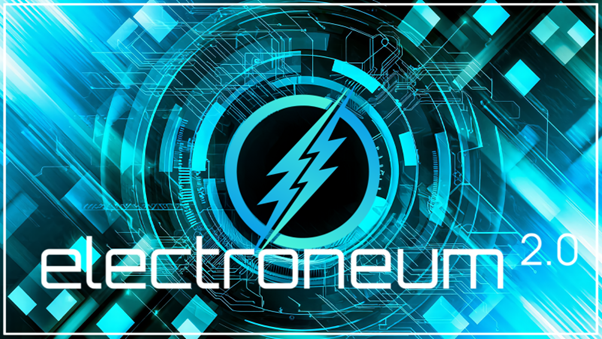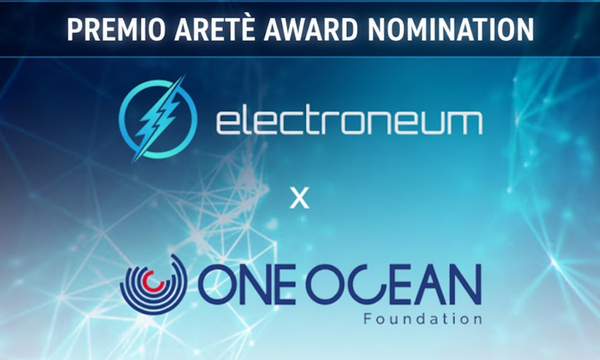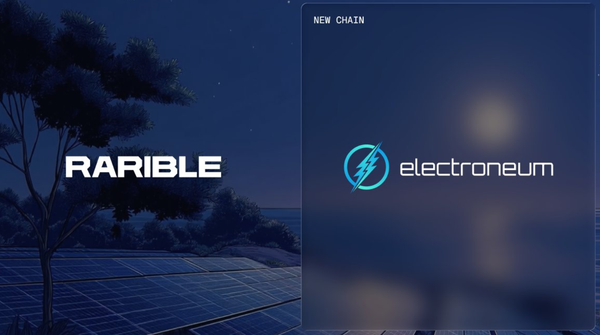Building Your First dApp on Electroneum Smart Chain

Are you looking to dive into the world of blockchain? Well, get ready to explore the Electroneum Smart Chain. You can build your very first decentralized application (dApp) in an environment that's both affordable and incredibly quick. This is your chance to move beyond theory and truly get hands-on with the power of Web3.

Why Electroneum Smart Chain?
Electroneum Smart Chain (ETN-SC) stands out with features meticulously designed for real-world utility and broad accessibility. Imagine transactions finalising in just 5 seconds, with fees so minuscule they are often a mere fraction of a penny. This unparalleled efficiency is paramount for the widespread adoption of blockchain technology in everyday scenarios. Furthermore, ETN-SC boasts full EVM (Ethereum Virtual Machine) compatibility, a significant advantage that means developers already proficient with Ethereum can seamlessly transition their skills and leverage existing tools and frameworks within the Electroneum ecosystem. This significantly lowers the barrier to entry for a vast community of talented builders.
Beyond its robust technical prowess, Electroneum is deeply committed to a 99.9% greener model than traditional Proof-of-Work blockchains. This unwavering focus on environmental sustainability aligns perfectly with a growing global movement towards eco-conscious technology. By prioritising energy efficiency, Electroneum ensures that groundbreaking innovation doesn't come at an undue environmental cost, contributing to a more sustainable digital future.
Understanding the Building Blocks: Smart Contracts
At the very heart of any dApp lies the smart contract. Think of smart contracts as self-executing agreements or programs whose logic is immutably stored and run directly on the blockchain. Once deployed, their code cannot be altered, ensuring transparency and trustworthiness. On Electroneum Smart Chain, just like on Ethereum, these are typically written in Solidity, a high-level, object-oriented programming language specifically designed for developing smart contracts for EVM-compatible blockchains.
The Electroneum Developer Resources offer an excellent starting point for understanding these crucial components. They define dApps as applications built on a decentralized network, combining a smart contract with a frontend user interface. A key benefit highlighted is the ability for your dApp to even incorporate smart contracts written by others, fostering an open and collaborative development environment. Dive into the fundamentals with the "Intro to dApps" and "On Smart Contracts" sections at developer.electroneum.com.
Setting Up Your Development Environment
To begin your dApp development journey, you'll need to prepare your local environment. This typically involves:
- Node.js and npm (Node Package Manager): These are essential for managing project dependencies and running various development tools.
- A Blockchain Development Framework: For EVM-compatible chains like Electroneum Smart Chain, popular choices include Truffle and Hardhat.
- Hardhat is known for its flexibility, advanced debugging capabilities (including console.log for smart contracts), and robust plugin system. It offers an integrated Hardhat Network for local development and provides excellent TypeScript support.
- Truffle offers a comprehensive suite for compilation, linking, deployment, and testing of smart contracts. It comes with built-in testing using Mocha and Chai and integrates well with Ganache, a personal blockchain for Ethereum development.
Both frameworks provide robust testing tools and facilitate network management, allowing you to easily switch between local development networks, testnets, and the mainnet. The choice often comes down to personal preference and project requirements. You can find more information on these tools and how to set up your environment within the Electroneum developer documentation.

Interacting with the Blockchain: Web3 Libraries
Once your smart contract is deployed, your dApp's frontend will need a way to communicate with it on the Electroneum Smart Chain. This is where Web3 libraries come into play. The two most prominent JavaScript libraries for this purpose are Web3.js and Ethers.js.
- Web3.js: This has been a long-standing and widely adopted library with a large community. It offers extensive functionalities for interacting with the Ethereum blockchain, including sending transactions and interacting with smart contracts. While it has a more traditional callback-based API, newer versions also support Promises.
- Ethers.js: Gaining significant traction, Ethers.js is often praised for its simplicity, lightweight nature, and modern Promise-based API design. It offers excellent wallet management features and robust utilities for handling various data types.
Both libraries provide the necessary tools to connect to an Electroneum Smart Chain node, send transactions, and call smart contract functions from your frontend. The Electroneum developer resources will guide you on how to best integrate these libraries with your dApp.
Crafting Your Frontend: The User Interface
The frontend is the visible part of your dApp – what users will interact with. This is typically built using popular web development frameworks, such as:
- React: A declarative and efficient JavaScript library for building user interfaces, known for its component-based architecture.
- Vue.js: A progressive framework for building user interfaces, offering a gentle learning curve and robust features.
- Angular: A comprehensive framework for building complex, enterprise-grade web applications.
Your chosen frontend framework will utilise the Web3 library (Web3.js or Ethers.js) to connect to the Electroneum Smart Chain, allowing users to initiate transactions, view data from smart contracts, and engage with the decentralized logic you've built. The Electroneum developer platform often provides boilerplate code or examples to help you quickly set up your frontend and connect it to your deployed smart contracts.
Ready to Dive Deeper?
The journey into dApp development can seem daunting, but with Electroneum's clear pathways and supportive resources, it becomes an achievable and rewarding endeavour. The comprehensive guides and tools you need are waiting for you at developer.electroneum.com. This platform is your go-to resource for detailed tutorials, practical examples, and in-depth documentation as you embark on your dApp development journey.
You'll find information on:
- Installation Instructions: Get your environment set up quickly.
- EVM-Compatibility Details: Understand how Electroneum Smart Chain leverages the Ethereum Virtual Machine.
- Consensus Protocol: Learn about the modified Istanbul Byzantine Fault Tolerance (IBFT) consensus, which enables nearly instant transaction verification and 1-block finality.
- Cross-chain Bridges: Discover how seamless transfers between the legacy Electroneum blockchain and the Smart Chain are enabled.
Join the Electroneum Community!
The Electroneum ecosystem is vibrant, growing, and built on a strong emphasis on community collaboration and support. As you explore dApp development and witness the immense potential of blockchain in action, we enthusiastically invite you to connect with us.
What will you build? The possibilities are truly endless when you combine accessible, efficient technology with a vision for creating impactful, decentralized applications. We are excited to see the innovative solutions you bring to life on Electroneum Smart Chain.
Join the conversation on X (formerly Twitter)! Follow the team to stay updated on the latest developments, updates, and more. Engage in vibrant discussions, share your progress, and connect with fellow builders and enthusiasts within the Electroneum community over at Discord..
See you there!!





